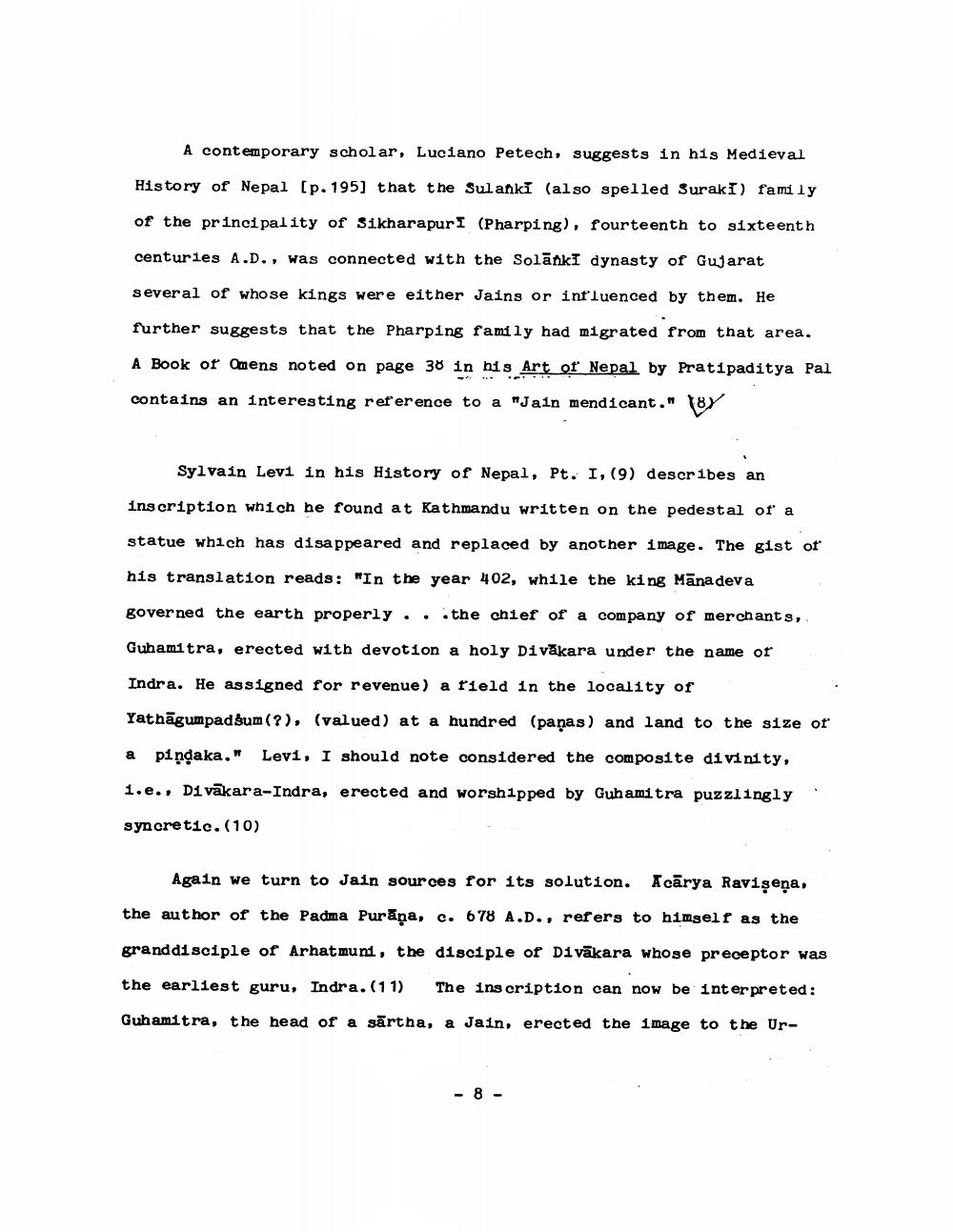________________
A contemporary scholar, Luciano Petech, suggests in his Medieval
History of Nepal (p. 195] that the Sulanki (also spelled SurakI) family
of the principality of Sikharapur I (Pharping), fourteenth to sixteenth
centuries A.D., was connected with the Solanki dynasty of Gujarat
several of whose kings were either Jains or influenced by them. He
further suggests that the Pharping family had migrated from that area.
A Book of Omens noted on page 38 in his Art of Nepal by Pratipaditya Pal
contains an interesting reference to a "Jain mendicant." 18Y
Sylvain Levi in his History of Nepal, Pt. I, (9) describes an
inscription which he found at Kathmandu written on the pedestal of a
statue which has disappeared and replaced by another image. The gist of
his translation reads: "In the year 402, while the king Māna deva
governed the earth properly...the chief of a company of merchants,
Guhamitra, erected with devotion a holy Divākara under the name of
Indra. He assigned for revenue) a field in the locality of
Yathāgumpad šum(?), (valued) at a hundred (paņas) and land to the size of
a pindaka."
Levi, I should note considered the composite divinity,
1.e., Divakara-Indra, erected and worshipped by Guhamitra puzzlingly.
syncretic. (10)
Again we turn to Jain sources for its solution. Acārya Ravişeņa,
the author of the Padma Purāņa, c. 678 A.D., refers to himself as the
granddisciple of Arhatmund, the disciple of Divakara whose preceptor was the earliest guru, Indra. (11) The inscription can now be interpreted: Guhamitra, the head of a sārtha, a Jain, erected the image to the Ur
-
8




